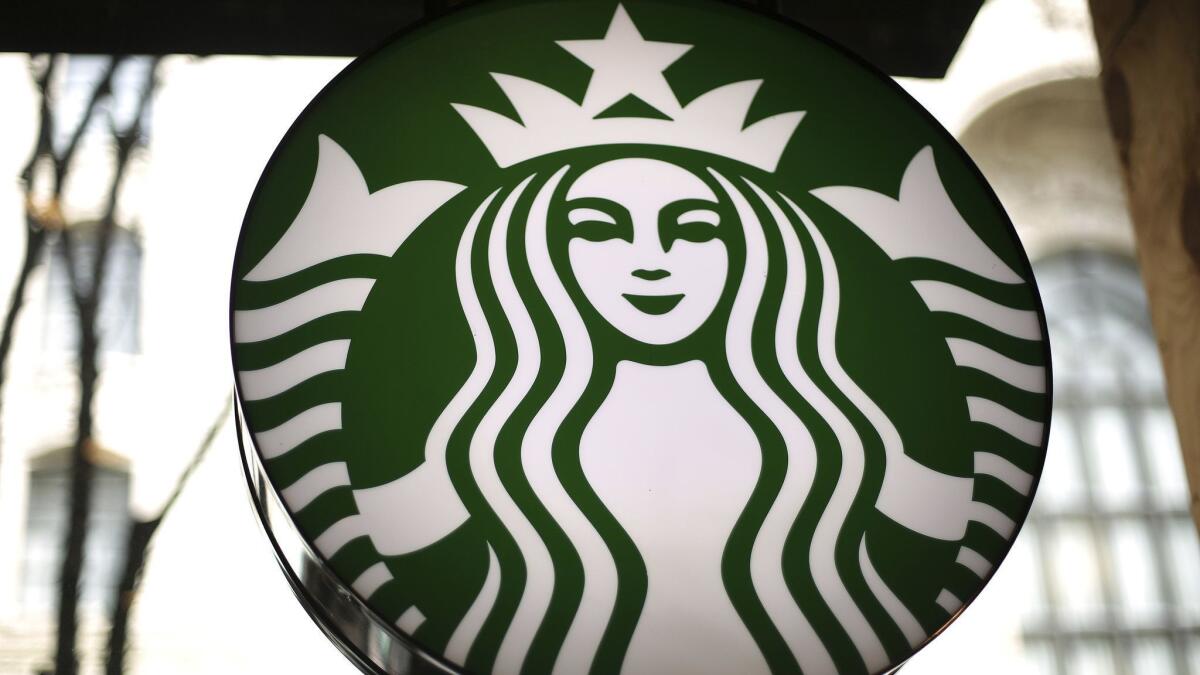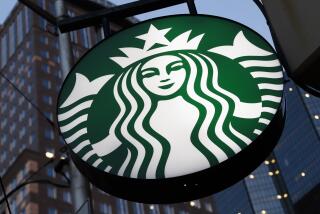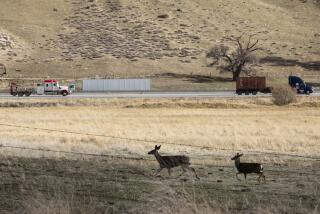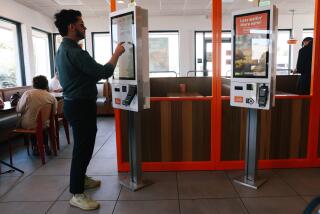Starbucks isn’t as popular as it used to be, so it’s trying delivery

Coffee delivery to the office? No problem. The soccer field? Sure thing. The whole world is a Starbucks now.
As Starbucks Corp. grapples with slowing foot traffic and a glut of competition, it’s hoping to snag new customers by meeting them where they are — literally. The company is introducing a delivery service in seven major U.S. cities through a partnership with Uber Eats, the coffee chain announced Tuesday.
Starbucks Delivers started Tuesday in San Francisco and will expand to Los Angeles, Boston, Chicago, New York and Washington in the following weeks, making nearly a quarter of its U.S. stores open for delivery. It already offered delivery in Miami.
“We know we have untapped customer demand for Starbucks Delivers in the U.S., and starting today, we’re expanding our best-in-class experience to our customers both in and out of our stores,” Roz Brewer, group president and chief operating officer for Starbucks, said in a statement. “We’re building on key learnings from past delivery pilots and by integrating our ordering technology directly with Uber Eats, we’ve unlocked the ability to bring Starbucks to customers for those times when they’re not able to come to us.”
With 95% of the menu eligible for delivery, customers can buy nearly everything Starbucks offers through the Uber Eats app without having to set foot in a store. Starbucks promises delivery in 30 minutes or less, and delivery fees start at $2.49.
The explosion of online delivery services in the past few years has shaken up the food and beverage industry by including restaurants that couldn’t offer delivery on their own. The market has grown steadily each year, and Swiss investment bank UBS predicts that delivery sales could be worth $365 billion by 2030.
While delivery is obviously a lucrative venture, it presents a logistical challenge for goods such as coffee, whose quality is especially susceptible to temperature and time. Starbucks said it has accounted for this in its delivery methods by using splash-proof lids and packaging that helps keep drinks at their appropriate temperatures. But the service is also a mixed bag for lower-priced items, as delivery costs can exceed the price of some items.
The Seattle-based coffee company is searching for other ways to compensate for falling traffic in its U.S. stores. Besides raising prices 1% to 2% last year, Starbucks is putting more emphasis on customer service and convenience by adding more drive-through windows and making its app available to all customers, not just those who use the company’s rewards program. The focus on delivery is its next big step.
Starbucks has been running a pilot delivery service in Miami since fall 2018, and the company said it had “strong demand,” including repeat business throughout the day. A similar pilot program will be tested in London this month as Starbucks looks to expand to European cities. Starbucks has also operated a delivery service in China through a partnership with Alibaba since August. That service is now available in 30 cities across China.
Telford writes for the Washington Post.
More to Read
Inside the business of entertainment
The Wide Shot brings you news, analysis and insights on everything from streaming wars to production — and what it all means for the future.
You may occasionally receive promotional content from the Los Angeles Times.










